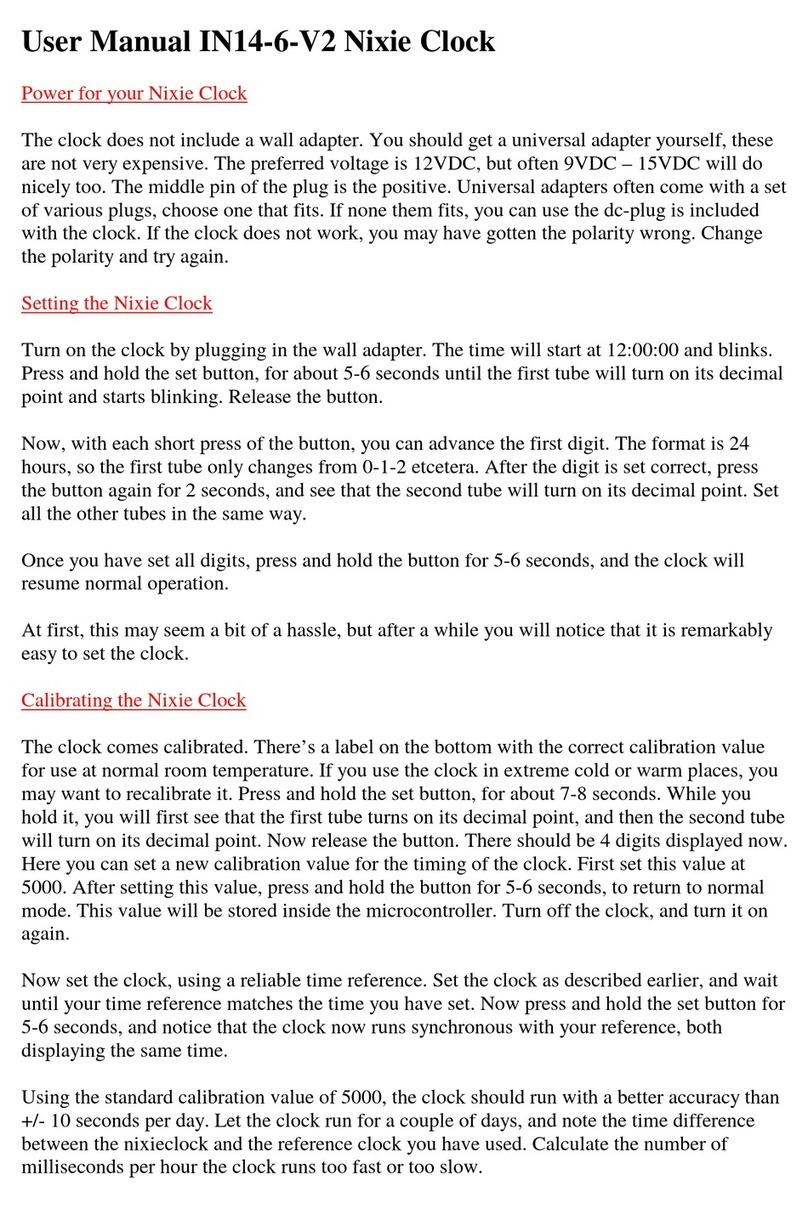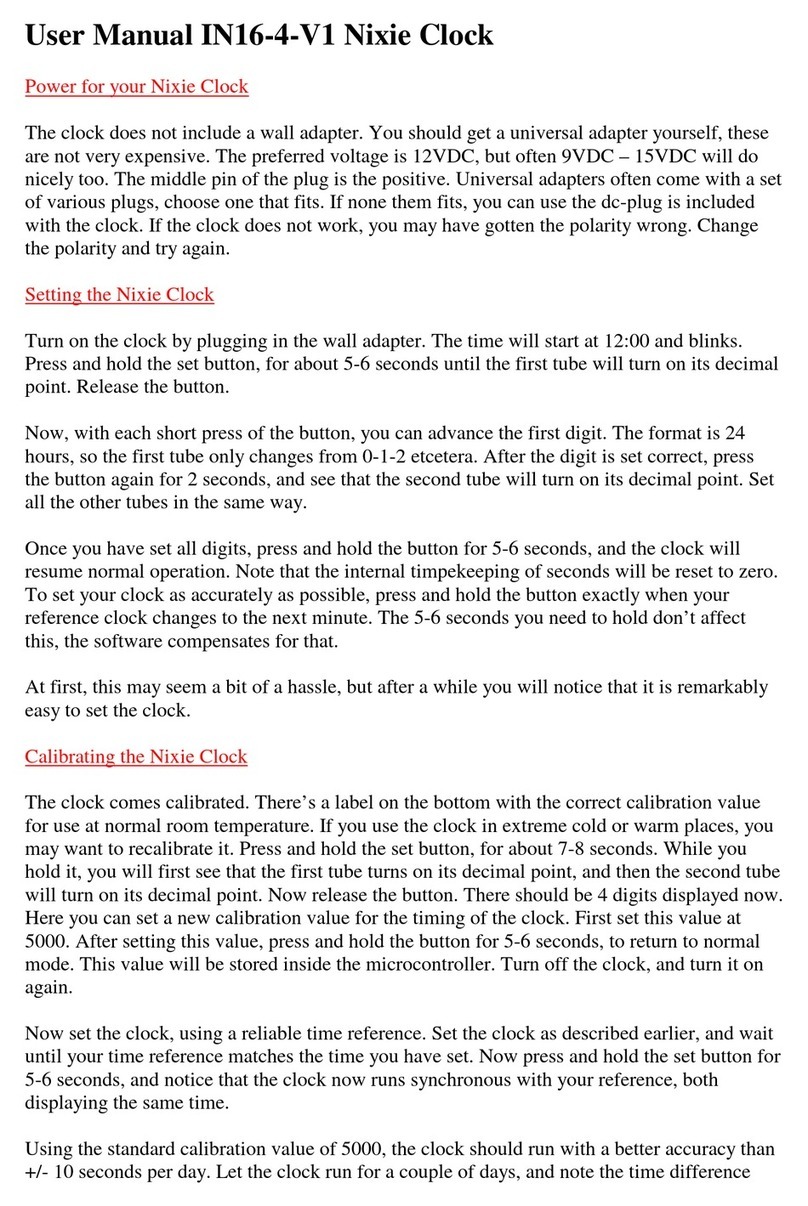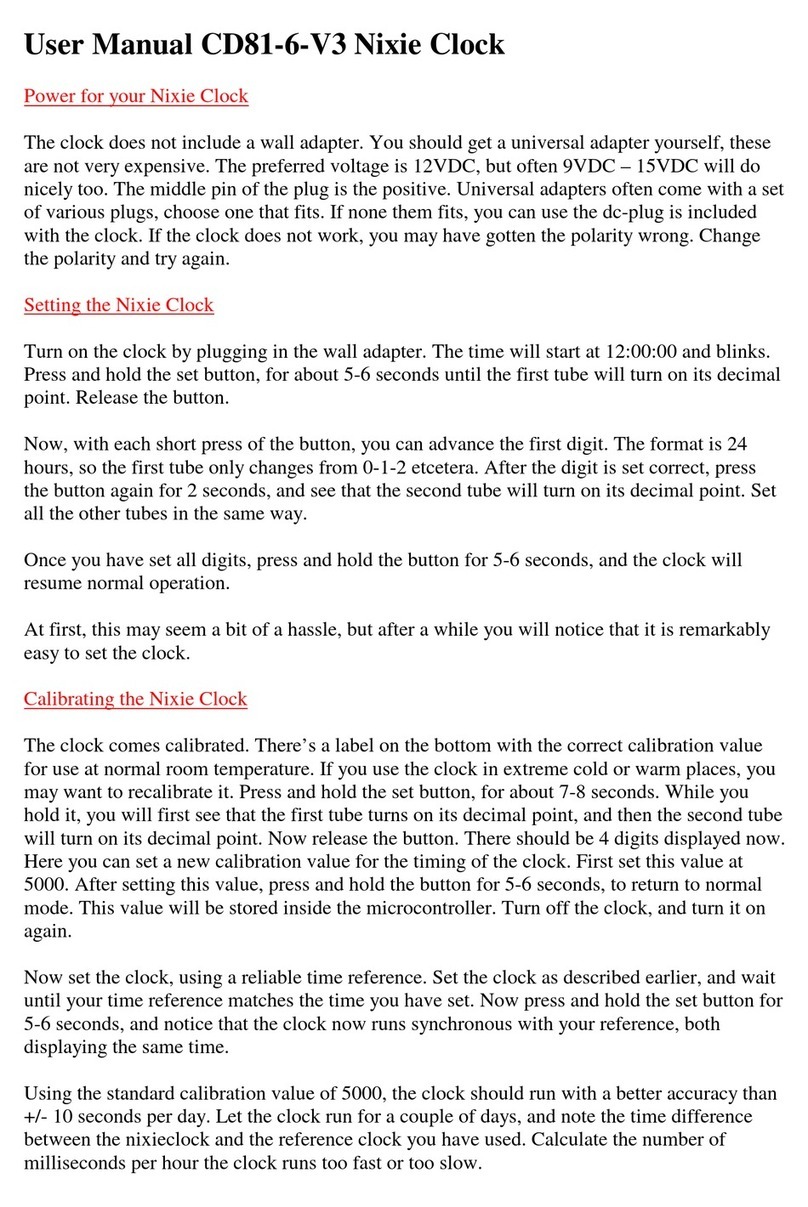Example: after 2 days, the nixieclock seems 7 seconds too fast. Divide by 48 hours,
And multiply by 1000. That’s 145 millisecond per hour. The clock needs to run 145
milliseconds per hour slower, so the new calibration value will be 5000 - 145 = 4855.
Enter the new calibration value, turn off the clock, and turn it on again. Now you can set the
clock, and it will be more accurate now. Repeat the procedure if need be.
Setting Display Off Time
Nixietubes last very long, but possibly not forever. You may want to use this option, to turn
the tubes off during the night. Press and hold the set button, for about 9 seconds. You will
first see that the first tube turns on its decimal point, and then the second tube will turn on its
decimal point, and then the third tube turns on its decimal point. Now release the button.
There should be 2 values displayed now, the two middle tubes are off. These values tell you at
what hour the display goes off, and at what hour it turns on again. Adjust the values to your
preferences. To save the values, hold the button for 5-6 seconds, to return to normal mode.
The value will be stored automatically inside the clock. If you don’t want to use this option,
put both hours at 00. (or set them at equal values). For your information, rumours tell the
tubes last for 50.000 hours. I have reasons to believe it will be actually longer than that, as the
current at which the tubes are driven is very low and well regulated in this design. 50.000
hours equals to more than 5 years. Lifetime is defined as the time it takes for the nixies to fade
to 50% of their initial brightness.
Setting General Options
In this option setup you can select ‘fading’ display of the tubes, and also you can turn off the
flashing neons. Press and hold the set button, for about 11 seconds. You will first see that the
first tube turns on its decimal point, and then the second tube, the third, and the fourth tube.
Now release the button. There should be 6 values displayed now, either ‘1’ or ‘0’. A ‘1’
means the option is turned on, a ‘0’ means the option is turned off. Adjust the values to your
preferences, the 1st digit sets the ‘fading’ on or off, the 2nd digit turns the flashing neons on
or off. The 3rd option is to enable decoding of DCF77 signals and only applies to Europe and
for clocks that are connected to a special radio receiver. The 4th option applies if you have the
realtime clock option installed, using a DS1302 RTC clock chip. The 5th option selects 12/24
hour format, 0 means 24 hour format, 1 means 12 hour format. This option only affects the
time displayed during normal operation; setting the time is always in 24 hour format. The 6th
option is a timezone correction of –1 hour, and is only to be used with a DCF77 receiver
installed, for UK residents. To save the settings, hold the button for 5-6 seconds, to return to
normal mode. The settings will be stored automatically inside the clock.
If you have any further questions, please contact me at
support@franktechniek.nl
or look for additional information at
www.franktechniek.nl
Have fun with your new nixieclock!
Thanks,
Frank Bemelman.






















